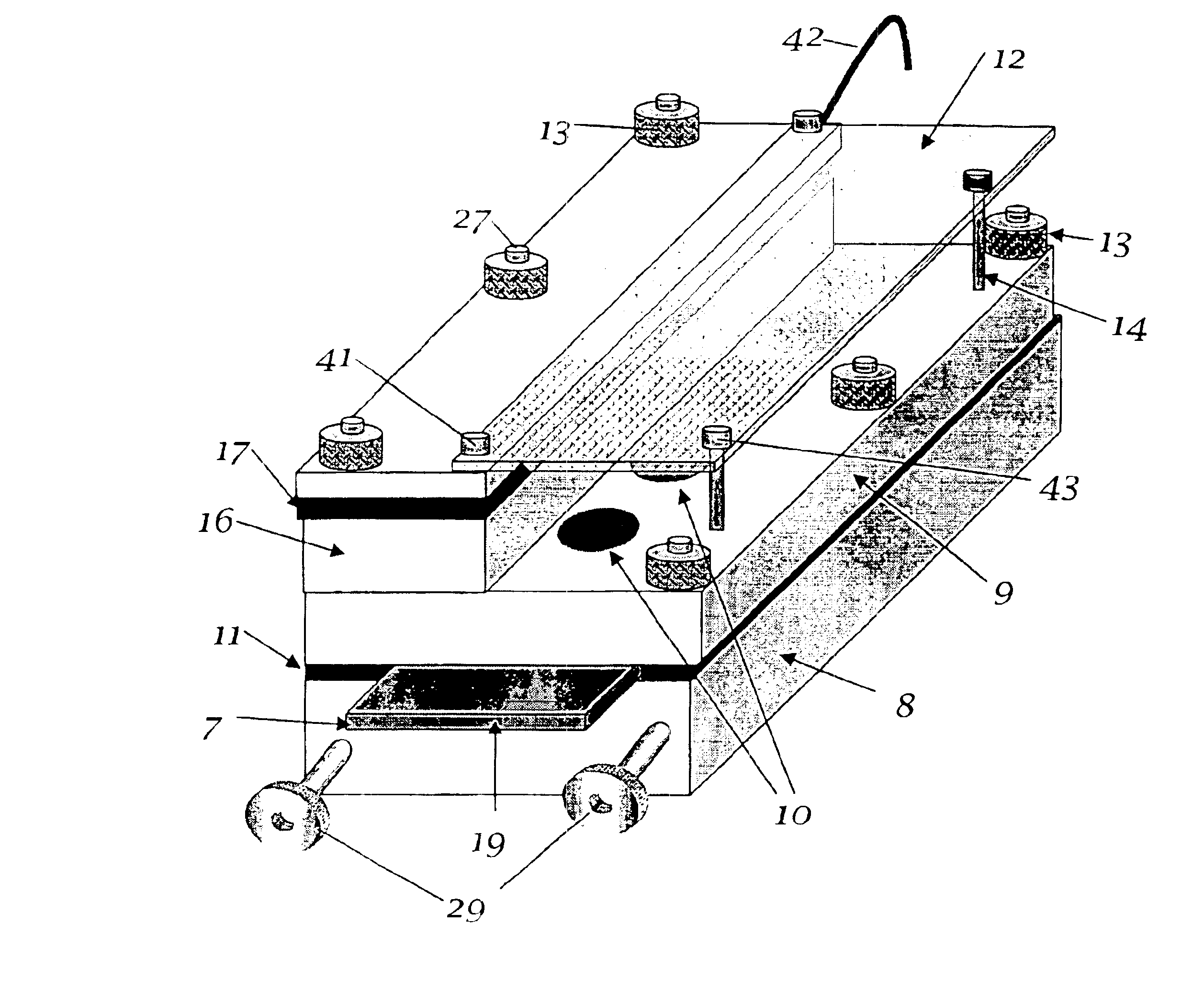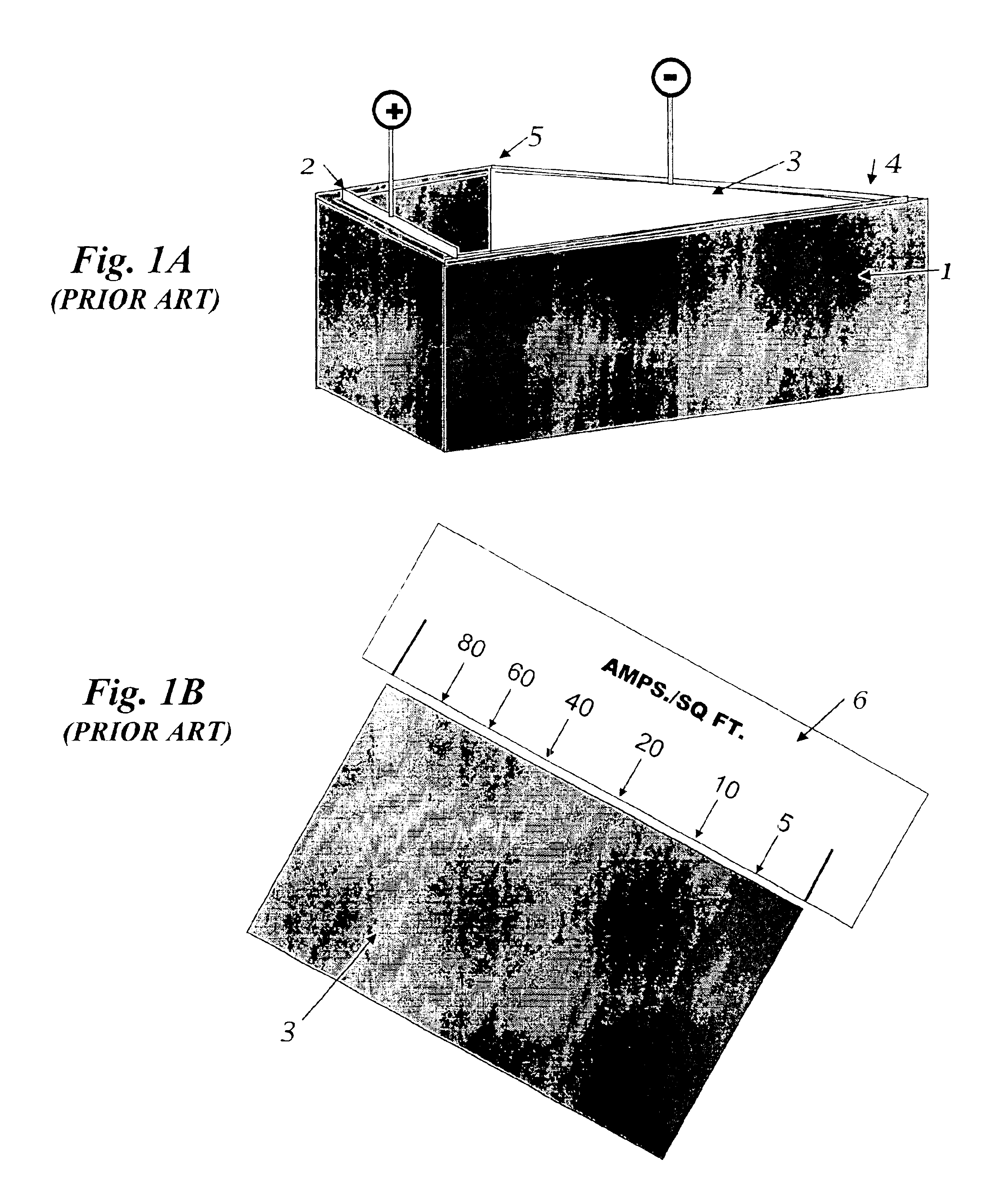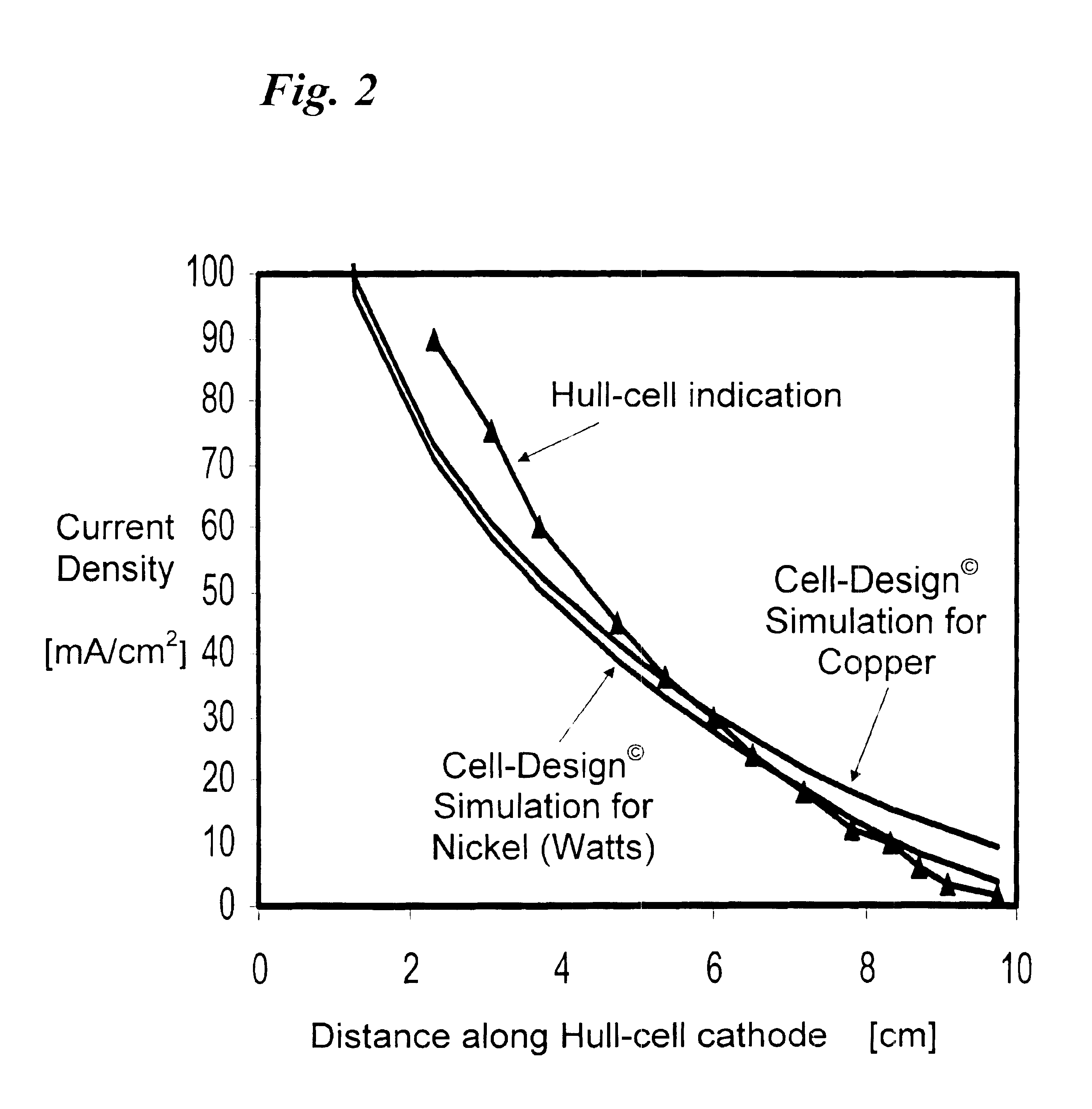Electrochemical system for analyzing performance and properties of electrolytic solutions
- Summary
- Abstract
- Description
- Claims
- Application Information
AI Technical Summary
Benefits of technology
Problems solved by technology
Method used
Image
Examples
example 1
[0063]FIG. 3A is a schematic drawing of a device that incorporates facets of the invention disclosed herein. FIG. 3A shows an overall view, FIG. 3B is a partially transparent view of the device showing some internal features of the cell. FIG. 3C shows the cover of the cell in an upside-down view, revealing the separate contacts and the cavities. FIG. 3D is a view of the bottom part of the cell with the top removed, showing the plated segmented substrate. FIG. 3E shows a schematic top view of the plated segmented cathode, and FIG. 3F is a cross-section (not to scale) of same substrate. FIGS. 3G and 3H are cross-sections of the device. The specific device described herein is about 2 inches wide, 5 inches long and about 1.5 inches high. It is understood that different sizes may be applied. Following is a detailed description of the device.
[0064]The device consists of two major parts as shown in detail in FIGS. 3C and 3D: a base (8) shown in detail in FIG. 3D, and a cover (9), shown in ...
example 2
[0074]Another cell and electrode configuration that can be used advantageously when incorporating elements of the invention disclosed herein, is a segmented rotating disk electrode (RDE), as shown schematically (60) in FIG. 5A, or a rotating segmented disk electrode surrounded by a ring electrode (62), as shown schematically in FIG. 5B. An insulating ring (64) separates the two. The ring electrode may serve as the reference electrode, a co-planar anode, or another auxiliary electrode whose potential is scanned and is used for analyzing products or reactants of the electrochemical reaction [Ref. 5]. The segments can be pie-shaped at the bottom of the rotating shaft (60), as shown in FIG. 5A. This configuration works similarly to that discussed in example 1, however, it can provide also additional transport data. As shown by Levich [Ref. 6], the rotating disk provides a uniform and easily calculable boundary layer thickness (or mass transport coefficient) that depends on the inverse s...
example 3
[0075]The device disclosed herein can also be configured as a cylinder, as shown schematically in FIG. 6A and FIG. 6B. This configuration can be used similarly to the ones discussed above e.g., Example 1. It has, however, a number of advantages: it can be rotated to incorporate the effects of transport, as in example 2, it can be designed in a compact form, to be used with small volumes, and furthermore, if configured as a very small diameter, it can present low transport resistance, since the radial diffusion flux is inversely proportional to the radius. Because of the electrode curvature, it can account for and simulate the effect of curvature on the deposit, e.g., incorporate effects of curvature on stress, and adhesion. The latter may be particularly important, because often deposits that show marginal adhesion to a flat substrate may adhere satisfactorily to a curved one. The segmental electrodes (66) can be stacked one on top of the other as shown in FIG. 6A or the cylinder ca...
PUM
| Property | Measurement | Unit |
|---|---|---|
| Time | aaaaa | aaaaa |
| Thickness | aaaaa | aaaaa |
| Dielectric polarization enthalpy | aaaaa | aaaaa |
Abstract
Description
Claims
Application Information
 Login to View More
Login to View More - R&D
- Intellectual Property
- Life Sciences
- Materials
- Tech Scout
- Unparalleled Data Quality
- Higher Quality Content
- 60% Fewer Hallucinations
Browse by: Latest US Patents, China's latest patents, Technical Efficacy Thesaurus, Application Domain, Technology Topic, Popular Technical Reports.
© 2025 PatSnap. All rights reserved.Legal|Privacy policy|Modern Slavery Act Transparency Statement|Sitemap|About US| Contact US: help@patsnap.com



